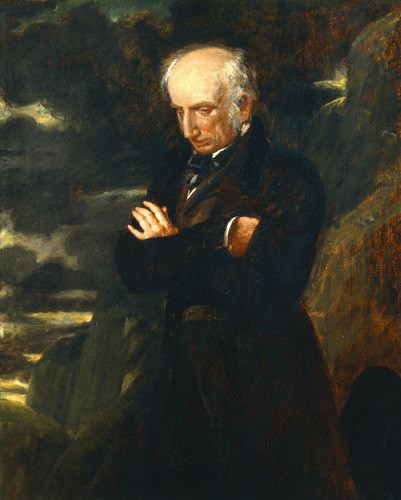William Wordsworth

William Wordsworth, was born in Cumberland now called Cumbria on April 7 1770. The poet spent most of his life in the Lake district, he was the second of five children, from a modestly prosperous family. His mother died when he was only seven years old, his father died when he was thirteen. Soon after he was sent to a grammar school in Hawkshead by his guardians. William received an excellent education in classical literarture as well as maths. In 1790 he went on a walking tour around France and the French Alps, during the course of his stay Wordsworth was greatly influenced by the ideals of the French revolution and became an ardent republican sympathizer, furthermore the young poet fell in love with Annette Vallon, with who he had a daughter called Caroline.
The unfortunate developments of the French revolution and the subsequent war between England and France forced him to return to England. The follwowing years spent in London, where very difficult for the poet. He found himself pennyless, alone and extremely hostile to his country’s opposition to the French, which was keeping him away from Annette and his daughter. During this period he befriended the radical William Golwin and learned to feel profound compassion for beggars, orphans and abbandoned mothers. All this proved to be very stresfull for the young poet and brought him to a near nervous breakdown. Luckily he was able to overcome this very difficuly period, through his contact with nature, which he rediscovered in Dorset whilst staying with his sister Dorothy, who was to be by his side for the rest of his life. In 1797 he met the poet Samuel Taylor Coleridge, their friendship was to change the course of english poetry, laying the foundation stone for English Romantic poetry. They produced a collection of short poems entitled “Lyrical Ballads” which was published anonymously in 1798. The collection contained the renowned work by Samuel Taylor Coleridge “The Rime of the Ancient Mariner” as well as many poems for which Wordsworth is famous for. These were tributes to birds, daffodils and “Nature’s holy plan,” as well as potraits of simple rural people, thus depicting the basic truths of human nature. Many of these poems were written to their original form, with the intention of breaking the properness of Neoclassical verse. The second edition published in 1800 contained Wordsworth’s famouse preface which stated that their objective was, “to choose incidents and situations from common life and to relate or describe them…in a selection of language really used by men,…tracing in them…the primary laws of our nature.” Thus becoming the Manifesto for English Romanticism. The Lake Poet, died on April 23, 1850, in Rydal Mout Westmorland.
